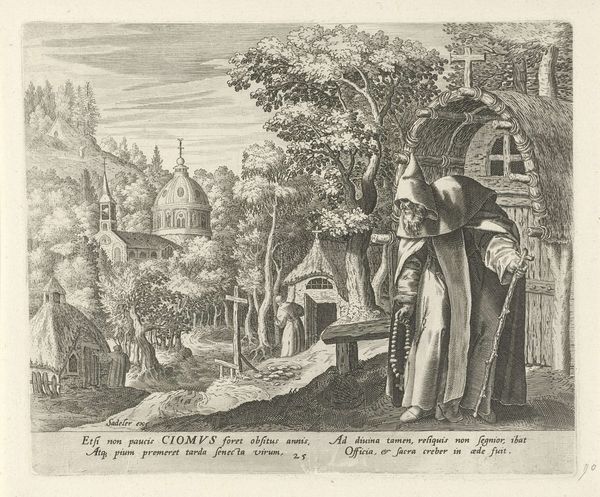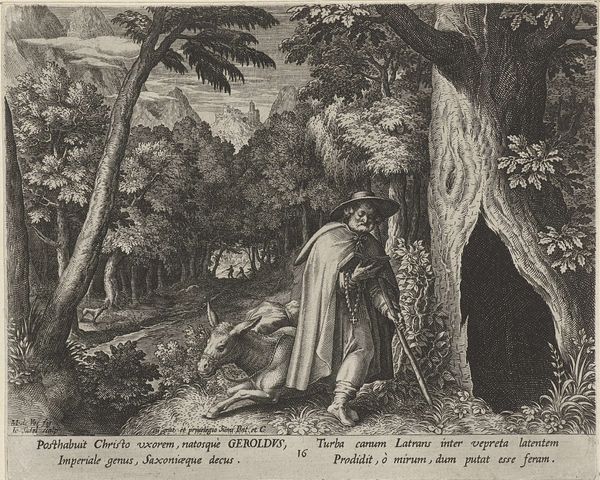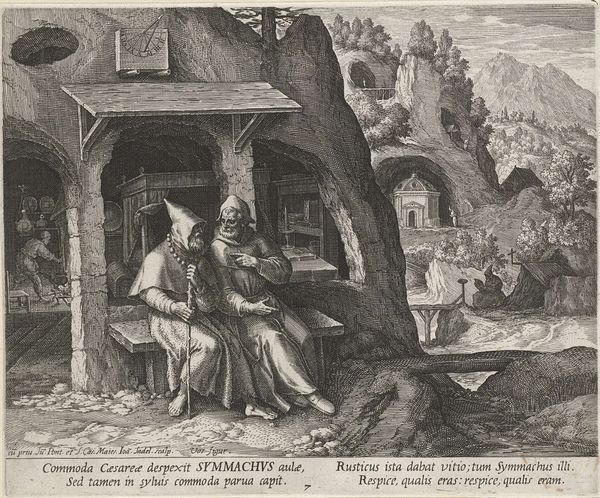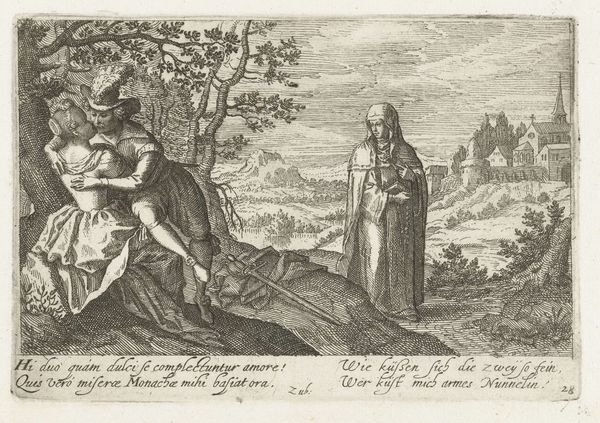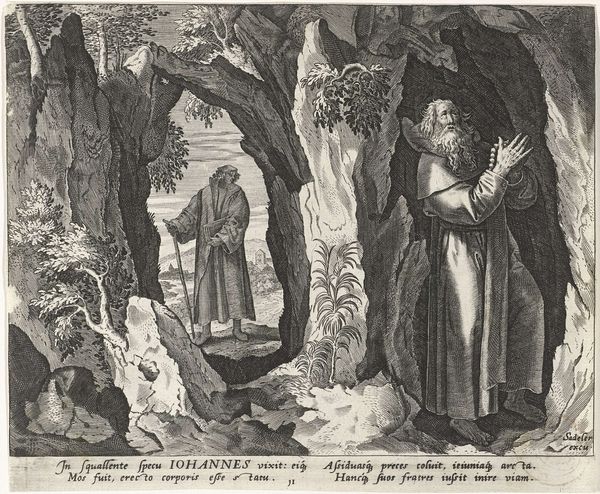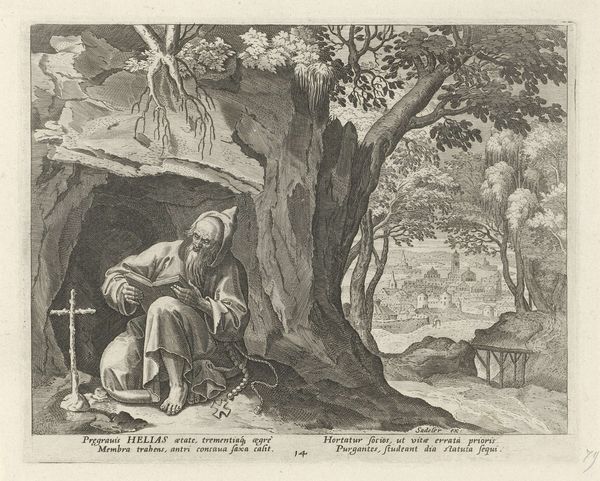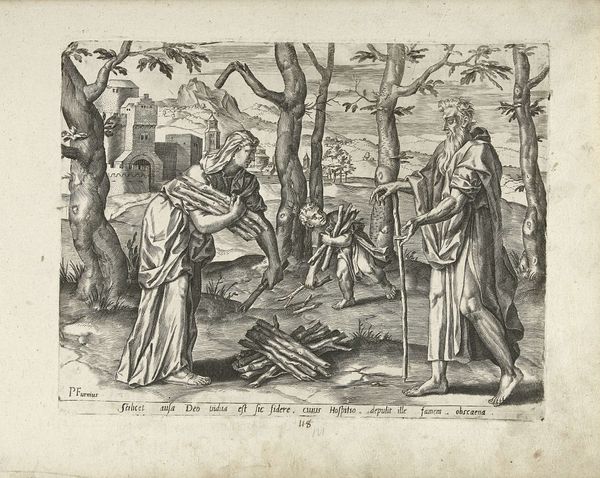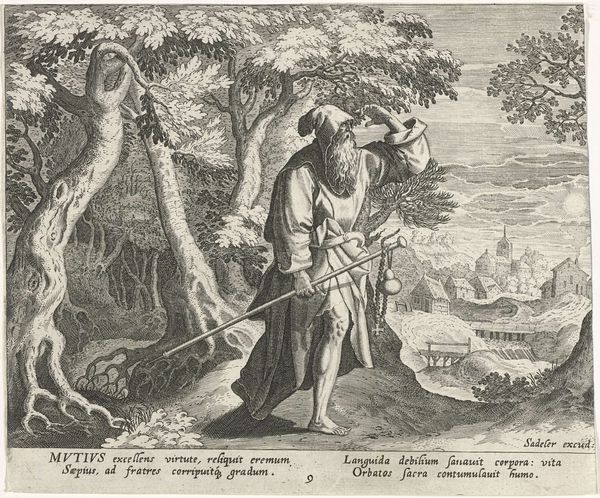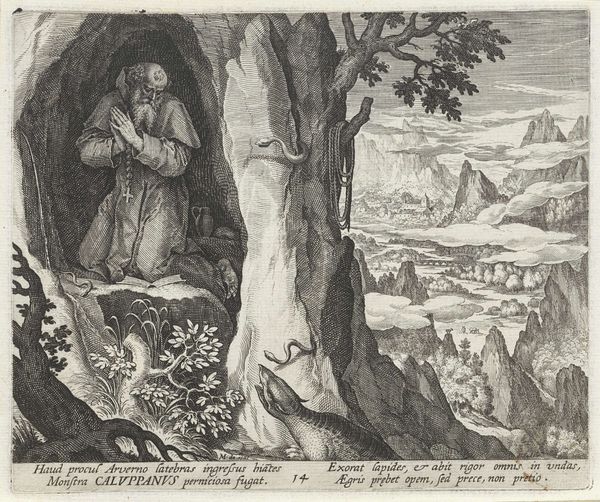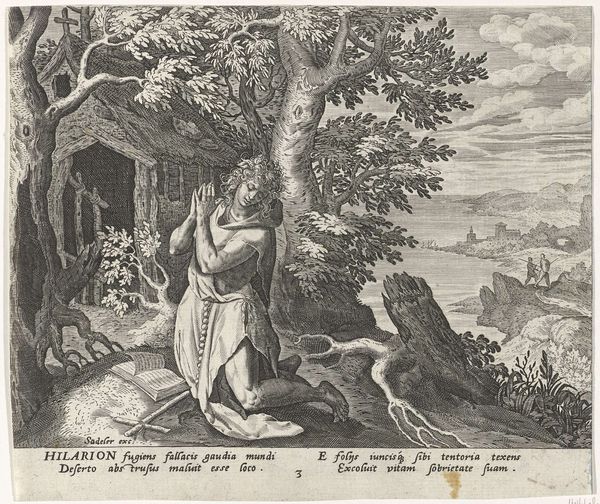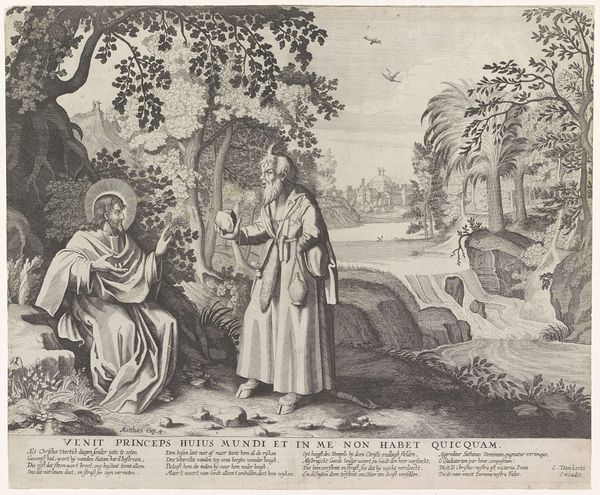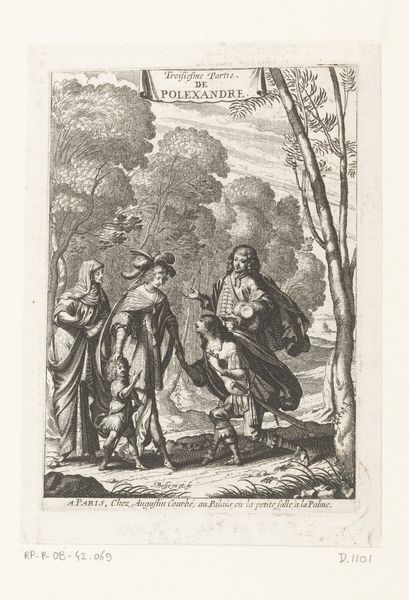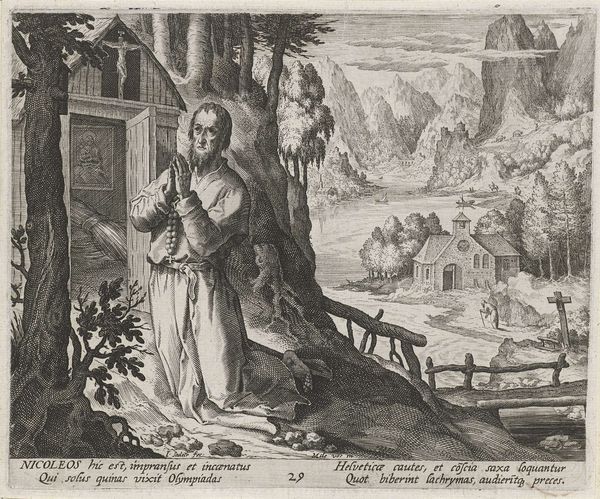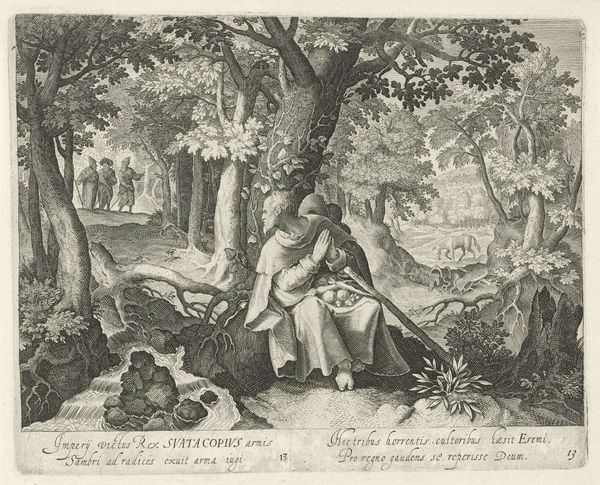
print, engraving
#
pen drawing
# print
#
landscape
#
figuration
#
history-painting
#
northern-renaissance
#
engraving
Dimensions: height 173 mm, width 197 mm
Copyright: Rijks Museum: Open Domain
Curator: This is an engraving created sometime between 1583 and 1588, attributed to Johann Sadeler I. It’s titled "Paphnutius as a Hermit." Editor: It's immediately striking; a cloaked figure emerging from the woods feels both isolated and imposing. There's an intense amount of detail, and almost stark light and shadow across the whole plate. Curator: The subject is Paphnutius, a historical figure who renounced public life to live as a hermit. What’s intriguing is that the artist situated him not in a barren wilderness, but in a landscape with hints of civilization like the figures in the distance who appear to be burdened by the weight that they bear, or even the clear sight of the houses and church on the left, next to the small lake or swamp. Editor: It almost creates a juxtaposition. Paphnutius seemingly turns his back on industry and labor, embodied by the line of burdened workers, for a life centered on faith and introspection, while remaining very close to town, the sounds of working people, the church and its rhythms of the religious calender, the need for food. This wasn't the isolation we tend to expect from Hermits. Do we know what materials he had access to for this piece? What type of ink and paper did the artist use? Curator: Sadeler was known for his skill in capturing fine details through engraving; his prints circulated widely, contributing to the dissemination of religious and allegorical ideas throughout Europe. These prints allowed for wide audiences to learn about religious ideas they may have not been able to read about themselves, while potentially even inspiring people who otherwise wouldn’t have become monks, clergy or religious in the way depicted in the engraving. Editor: Considering this, it raises some questions about accessibility. It also complicates Paphnutius’ choice; we see how engravers made it more available for many audiences through careful labor. This highlights the complex relationships of work in our day-to-day reality, including both spiritual and artisanal making, production and use, that continue to hold sway centuries later. Curator: Absolutely, viewing art through multiple lenses enhances its significance and invites reflection on themes that resonate even today. Editor: I find this piece incredibly captivating because of its layered commentary, while remaining open to my own interpretation that allows for some appreciation and admiration of the artists' craft.
Comments
No comments
Be the first to comment and join the conversation on the ultimate creative platform.
